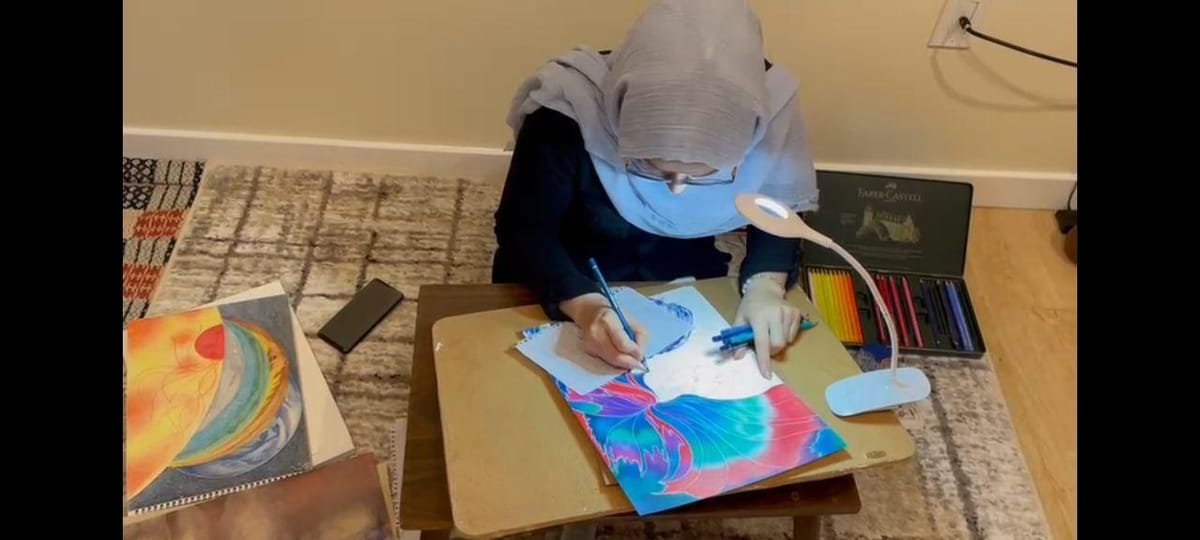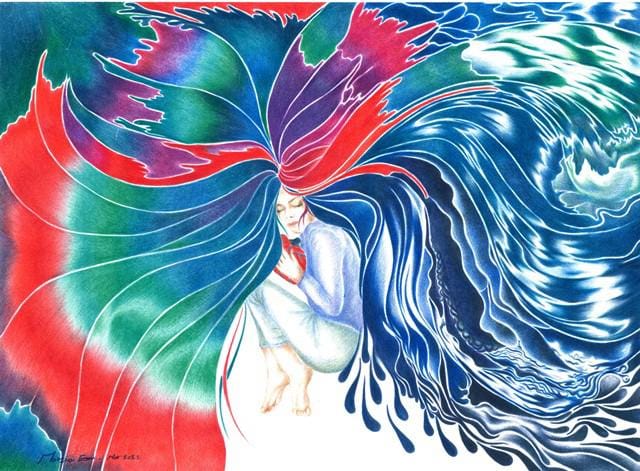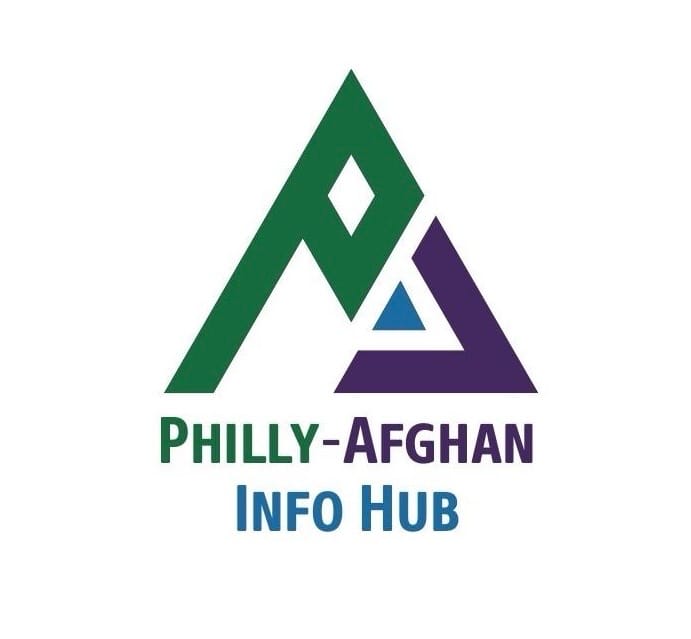
Author: Marzia Ebrahimi
In August 2021, I was outside the gates of Kabul’s airport, trying to escape Afghanistan. The Taliban had just taken control of the country. As a Hazara, a Shia and someone who had worked with the U.S. government, I knew I was in danger. Like thousands of others, I waited for hours in the chaos — desperate for safety, desperate for a way out.
Eventually, I gave up. There was no way through the gates. Just one hour after I left the airport, a massive explosion ripped through the crowd. A suicide bombing struck Kabul’s Hamid Karzai International Airport on Aug. 26, amid the chaotic U.S. withdrawal from Afghanistan. The attack, carried out by an ISIS-K militant, killed 170 Afghans and 13 U.S. service members as thousands crowded the area in desperate attempts to flee the country.
I survived — by chance. I returned to Herat with no idea what would happen next.
Back home, the danger grew worse. In October, the Taliban arrested my father and brothers. I was hidden to be safe. My identity and my past job, as an officer at a USAID program for women, had made me a target. I made the hardest decision of my life: to leave everything behind.
Before I left, I had to destroy many of my most personal drawings — pieces filled with memory and emotion. I feared they could be used against me and my family. I packed a very small backpack and a few sheets of paper, leaving everything else — my art, my home and my loved ones — behind.
With help from my professor at the Institute of Leadership Development run by the Morning Star Development, a non-profit based in the US, I was able to board a humanitarian flight. I flew to Abu Dhabi and was placed in a crowded humanitarian camp. There, I spent nearly two months in quarantine — surrounded by many people like me who were apart from home and family, yet feeling completely alone.
During this time, I was overthinking with grief and pushing myself into a depression. I dreamed of home and drew, but had few materials to draw with. One day, I borrowed a pen from a security guard. That simple act gave me back something I had lost: the ability to express myself. I began to draw again — not because I had a plan, but because I needed to survive emotionally.

Through each artwork, I tried to give form to emotions I couldn’t express in words. The first piece emerged from the deepest of them all, “The Art of Feeling” — a collection of works that helped me process the trauma of forced migration, grief and the struggle to heal.
Sadness of Dispersion
My first art piece, “Sadness of Dispersion”, captures the deep loneliness I felt in the camp — a sense of being scattered and invisible in an unclear future, while at the same time feeling homeless.
Life Path
The next one, “Life Path,” shows a woman walking through danger, holding her child and both showing courage and vulnerability. This drawing was the feeling of all people who were far apart from their loved ones - wives and husbands, mothers and children and other family members who were living in two or more different countries and too far from each other.
Music
In life, there are moments when you drown in emotions, and you want to stay there with no survival attempt. “Music” came from the quiet moments I spent listening to songs that reminded me of home. I saw music everywhere — even in silence.
Trust
In December 2021, I arrived in the United States and was transferred to Fort Dix military base in New Jersey. Though I was finally in a country where I could stay, I felt emotionally numb. The trauma, loss, loneliness and uncertainty followed me, but I kept drawing. I understood that the only thing that can help now is drawing to survive myself.
“Trust” is about holding onto something unseen — the belief that healing is still possible. I made a decision to still be happy. My drawing continued, and it was keeping me busy to survive emotionally and physically. I did this piece while in the refugee camp.
Silence and Stillness
Later on, when I left the camp, I started a new life with so many new things. A life of paying bills, getting a job and struggling with homesickness and culture shock all at the same time. “Silence and Stillness” marks a turning point — the beginning of listening to myself instead of the noise around me.
Inner PeaceAs time passed, I was slowly settling, yet still straggling emotionally. “Inner Peace” reflects my slow process of self-acceptance, even while carrying deep wounds.

Observation
By this time, I had come into my new life and trained myself to detach from thoughts and stop overthinking. “Observation” shows how I learned to witness my thoughts without being controlled by them.
Silence and DelightMy most recent work, “Silence and Delight” expresses the quiet joy of surviving — of finding meaning, not in comfort, but in presence.
“The Art of Feeling” is more than a series of drawings. It is my journey — through fear, displacement and healing. When I had nothing else, art became my way to hold onto myself — a space to process pain and rediscover strength. These drawings are marks of survival and the beginning of something new. I have learned that creative expression can help anyone facing loss or uncertainty find healing too.
My artwork in Instagram is available through this handle: @art4amina
Additional Resources:
Art doesn’t need to be perfect; it just needs to begin — and there are resources in the area to help others start that journey:
- BuildaBridge: offers trauma-informed art-making to support youth and their communities' healing and hope-raising.
- https://www.buildabridge.org
- Imperfecta: is an art & design gallery focused on elevating women artists and underrepresented creatives. Imperfecta is founded on the belief that imperfection defines humanity. The gallery curates and shares art, design pieces, and heirlooms that celebrate beauty in the imperfect.
- As an art gallery, it showcases diverse forms of fine art—including visual works, sculptures, assemblages, installations, conceptual pieces, and art dolls. As a design space, its collection features jewelry, vessels, distinctive décor, dinnerware, and occasional antique fabrics, furniture, and heirlooms.
Website: https://www.imperfecta.xyz
- Philly Art Center: Offers classes, workshops, supports self-expression through art.
Website: https://phillyartcenter.com/
- Vox Populi Gallery/Collective: Experimental gallery, monthly shows, community events, workshops
https://en.wikipedia.org/wiki/Vox_Populi_%28art_gallery%29?
- InLiquid: Nonprofit with member programs, exhibition opportunities, directories, and support for Philly-area artists.
https://en.wikipedia.org/wiki/InLiquid?utm
- CraftNOW: shows a list of different artist studio spaces across Philadelphia in different neighborhoods. Organized in an alphabetical order, you can have access to the information related to a long list of places and works of artists and crafts people.
Website: https://www.craftnowphila.org/studios
- Fisher Art Memorial: Offers art classes, workshops, and community art experiences for people of all backgrounds.
Website: https://fleisher.org/
